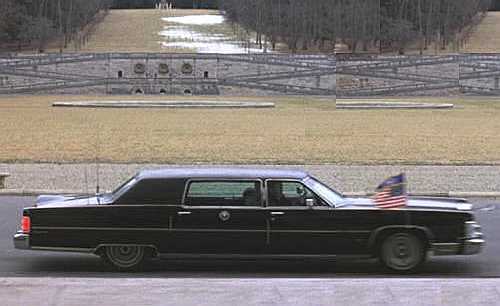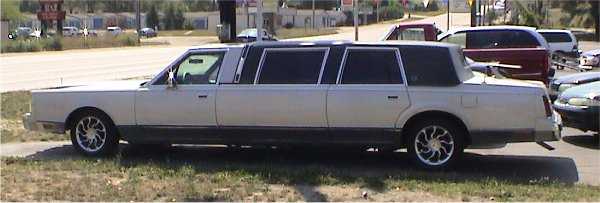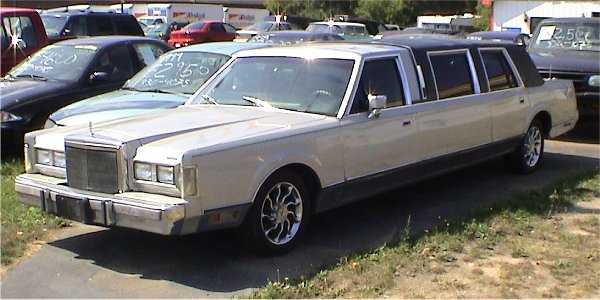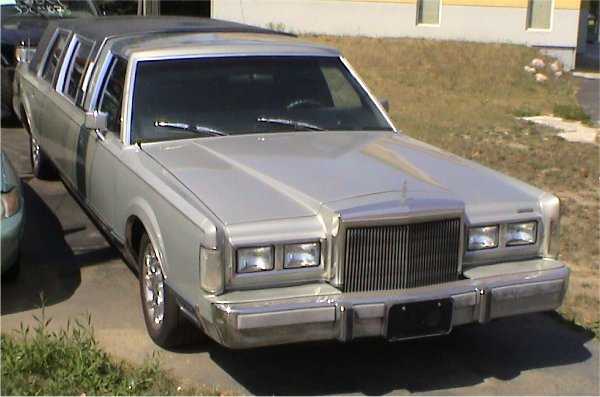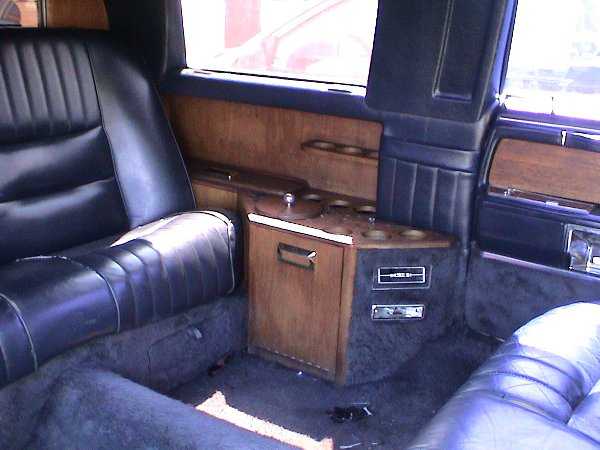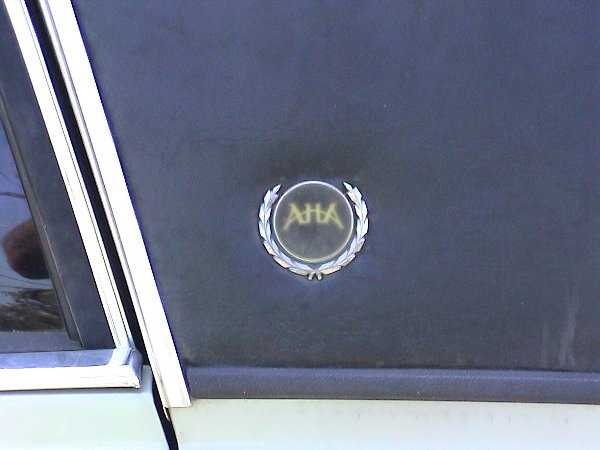

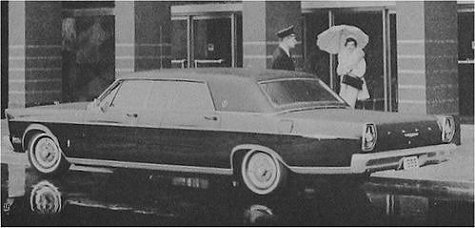 This car is now a confirmed early Andy Hotton which
Hotton's company "Dearborn Steel Tubing" built. I spoke with the owner
who is in the Detroit area in March 2007 and was told it was 1 of 100 that was contracted to
be built in a project called "Ford LTD Limousine Program".
He thinks that only a few (about 10) were ever built, some in 1965 and 1966. 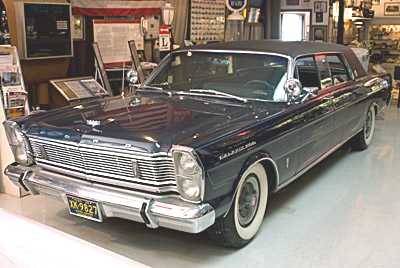 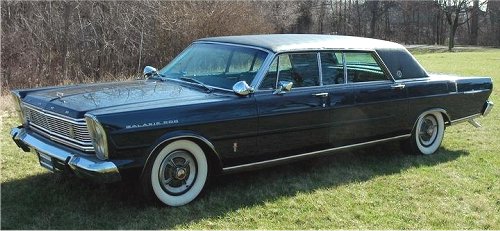 |
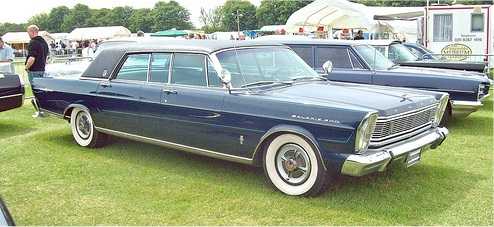
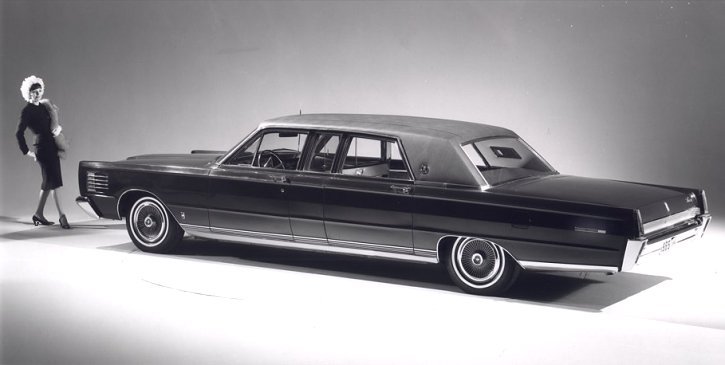

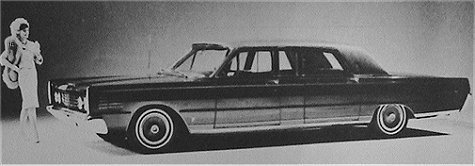
Andy Hotton Associates Inc.- 1947-1976 Belleville, MichiganWith a history extending from the late 1940's, most of today's limousine operators were not yet born when Andy Hotton (1916-2004) opened up shop in the Detroit Area in 1947. His first products were not limousines, however. After attending the Ford Trade School, Hotton worked his way through the ranks of the huge automaker, and was directly involved in the planning of the massive Willow Run B-24 Bomber Plant. His promising career was cut short when he was drafted during 1942. After the war, a chronic illness kept him from returning to Ford, but with the assistance of Don Sullivan, one of the architects of Ford Flathead V-8, he started a new firm that produced aftermarket performance parts for flathead-equipped Ford vehicles. Early products included performance cylinder heads, manifolds, and a dual exhaust kit. His first products were marketed under the Hotton-Sullivan name. In 1949, Hotton approached Ford hoping to become a factory supplier of dual exhaust systems for the V-8. He arranged a back-to-back test of a 1949 Ford police car, the first equipped with a stock single exhaust system and the second with one of his high-performance dual exhaust systems. Ford promptly signed a deal with Hotton to supply them with his exhaust systems. Unbeknownst to them, the faster, Hotton dual exhaust-equipped car had a more powerful Mercury flathead installed under the hood. Hotton formed a new firm called Dearborn Steel Tubing to build the dual exhausts for Ford, who offered them to customers as one of the first iterations of the “Police Package”. Hotton’s new firm soon developed a number of steering and suspension upgrades that dramatically improved the handling of the Police Optioned Fords. During the late 1950s DST (Dearborn Steel Tubing), became involved in a number of special vehicle projects for Ford and eventually started building many of their prototypes. Ford's 1961 Custom Car Caravan was a produced by DST The prototype sheet metal for the first fastback Mustang, a 1962 "Town Car" Limousine on a Continental chassis for the White House and the futuristic Fords that appeared at the 1964 World's Fair were all special projects of the Hotton operation. Since the early 1960s DST has been in charge of Ford’s auto show exhibits and show cars. Although they’re now called DST Industries and headquartered in Romulus, Michigan, the firm that Andy Hotton started over 55 years ago still transports all of Fords show cars, as well as providing the fixtures, backdrops and turntables they’re displayed on. For many years DST was also responsible for preparing Ford’s factory race cars. The Falcons driven by Joe Weatherly and Chris Turner in the car’s first victory at Daytona were DST creations as were the 1964 Ford Fairlane Thunderbolt drag cars. The lightweight (3203lbs) Thunderbolts featured a stripped interior, Plexiglas side windows, Fiberglass and aluminum bumpers, a heavy-duty suspension and rear-end, larger brakes most importantly Ford’s powerful 425hp 427ci motor. A total of 111 were eventually built, the first 12 were stock 2-door Fairlane 500s taken from the assembly line and modified at DST while the remaining 99 were completely assembled at DST using parts supplied by Ford. DST also built 2 1964 Ford Falcon 427 A/FX dragsters for Ford. They were similar to the Fairlanes but weighed about 800 lbs less thanks to their fiberglass doors, deck lid, front fenders, trunk, and front bumper. Two Ford F-100 XL Pickups were also built by Hotton during the same period. Essentially
an F-100 on steroids, it was planned to be a factory muscle truck and featured Ford’s 425hp 427ci engine,
the same unit that was in the Fairlane and Falcon drag cars. No further examples are known to have
been built, and neither vehicle survives. DST also conducted special events for Ford and was responsible for the legendary 1964 Comet Run – a grueling 30-day trial where a fleet of Comets were driven around the Daytona Speedway, stopping only for gas and tires at speeds of more than 100mph. The Comet Run established over 100 international records for endurance driving, some of which still stand to this day. Hotton also built the 5 1967 Thunderbird Apollo Hardtops that were created for Abercrombie & Fitch at a cost of $15,000 for a special promotion at their flagship sporting goods stores. The exterior was painted a special Apollo Metallic Blue and included a metallic blue vinyl roof, electric sun roof, gold-plated landau bars and nameplates, chrome-plated door jambs and unusual, blue-chromed wheel covers, and a gold-toned Thunderbird insignia on the grille. Inside accessories included a Philco television, a telephone, and a reclining passenger seat with power head rest and foot rest. Each front seat back had an adjustable conference table and was covered in blue leather. But the project that really got Hotton started in the limousine business was the design and fabrication of a series of 85 1965-66 Ford LTD and Mercury Park Lane stretches that were sold through authorized Ford and Mercury dealers in the mid 1960's. It's unknown as to how many limos were LTDs and how many were Park Lanes, although a couple of the Fords are known to exist. The limos were made by Hollowell Engineering and Dearborn Steel Tubing - both divisions of Andy Hotton Associates. Lincolns were soon added and by 1969, AHA was one of three authorized builders of stretched Lincoln Continentals in North America. Hotton's Lincoln limousines were targeted at chauffer-driven executives and funeral directors who desired something other than a Cadillac. The 36" stretch Lincolns offered by Lehman-Peterson/Moloney catered more to the Celebrity crowd while Hess & Eisenhardt dealt almost exclusively in armored coaches for dignitaries and heads of state. In 1971 Hotton offered three different 24" stretch Lincoln limousines and a shorter 12" stretch called the Formal Sedan that was targeted at busy executives. All of the stretches featured rear reading lights and the 24" long-wheelbase limousine could be ordered with either two forward facing jump seats or a bench type jump seat that seated an extra passenger. The longer 151" wheelbases limos could be outfitted as a basic 8 or 9-passenger Limousine with no divider, an 8 or 9-passenger Formal Limousine equipped with an electric glass divider plus rear A/C and a radio, or as an 8-passenger Formal Brougham which added a larger rear console, upgraded trim and upholstery plus a Mark III-style deck lid and opera windows. A standard-wheelbase Lincoln with an upgraded interior and the Mark IV accents was added starting in 1972 as was Hotton's first funeral car, A Lincoln Continental Town Car which was built using on the 24" stretch limousine. It featured a padded landau roof but did not feature a raised roof or the commercial glass most directors were accustomed to. However, it was longer and more attractive than the station wagon conversions offered by others, and was far cheaper than the Cadillac coaches offered by the rest of the industry. When paired with a matching Hotton stretch limousine, it offered funeral directors an attractive and distinguished Cadillac alternative. Hotton offered convertible and station wagon conversion of the Lincoln Town Car starting in 1971. The standard-wheelbase Town Car wagons were built by removing the trunk lid and rear window and inserting a current-model Ford/Mercury station wagon compartment in their place. The Lincoln's taillights were then sectioned into the lower portion of the tailgate, a feature shared by Hotton's Lincoln funeral coaches. The Convertible's were built using a base Continental Coupe as the heavily-optioned Town Coupe included opera lights and a vinyl roof, both of which would be sheared off in the process. After the top was removed, a modified convertible top mechanism from a full-sized Ford or Mercury convertible was installed in its place. Hotton's tops were available in back, white, dark blue and light beige and a number of optional accessories were available, such as a full continental kit with extended rear fenders, a Mark III-IV-style deck lid and a Mark II-IV-style grille. A customized Mercury Montego was also available from 1973 to 1976 that featured a custom grill, headlight surrounds, Lincoln Mark IV-style deck lid and opera windows and a padded landau roof. Hotton offered the same package to Mercury dealers as a kit that could be installed in the dealer's body shop. Hotton continued producing their executive Lincoln limousines and funeral cars through 1976 when Melvin A. Stein purchased the Canadian manufacturing rights from Hotton and opened up a new plant at 5339 Maingate Dr. in Mississauga, Ontario, Canada, renaming it AHA Manufacturing Co. Ltd. Under Stein, AHA continued to produce stretched Lincoln limousines as well as a number of Ford-based conversions which included a couple hundred 1976-79 Lincoln Continental two-door convertibles, 28 Escort-based Ford EXP/LN7 convertibles, plus a handful of Lincoln Mark V pickups that were based on the Ranchero. In 1977 Stein hired a Canadian automotive journalist named Thomas A. McPherson, to take over AHA's sales and marketing. In addition to being an author - McPherson wrote the bible of the professional car hobby: American Funeral Cars & Ambulances Since 1900 - he was also a graduate of Humber College's mortuary management program and had once run a small funeral home. McPherson had little trouble convincing Stein to start producing funeral cars as their were four prototype Lincoln extended wheelbase funeral coaches present at AHA's April, 1978 Toronto unveiling. The four models were The Landau, Viceroy, Westminster and Verona and all featured a 157-inch (30" stretch) wheelbase, a full-length raised roof, a side-hinged rear loading door, a rear-loading casket table and a rear air pump to keep the coach level during use. Due to Cadillac's new downsized coaches, the initial sales of the big Lincolns were brisk and production was moved to a new plant at 230 Eddystone Ave. in Downsview, a northwest Toronto suburb in early 1979. AHA had already had some success with their Buick stretch limousines and decided to create a budget-priced line of Buick funeral coaches. McPherson had a brainstorm and obtained the rights to the Eureka trade name from the family of the late Wilbur S. Meyers, Eureka's last owner. The Eureka trade name was well recognized by funeral directors so when McPherson's "Eureka Buick" coaches were introduced in 1980, AHA soon had a waiting list for the attractive coaches which were built on a stretched (to 160") Electra chassis. AHA's owner, Mel Stein, was a limousine man and had grown weary of the funeral car project, so McPherson approached Howard G. Carter, a wealthy Vancouver car dealer for help with financing the purchase of AHA's funeral car division, which was now called Eureka Coach. In addition to his chain of GM and Chrysler dealerships, Carter also owned Howard Distributors of Burnaby, a Vancouver suburb, which was western Canada's largest professional car dealer at that time. Carter provided the financing but agreed to give McPherson control of new company, which the two formally purchased on November, 1, 1980. As Eureka Coach Co.'s President and Chief Executive Officer, McPherson contacted his many friends in the industry and soon had a large and well-organized group of dealers north and south of the US-Canadian border. Please see Eureka for more information on McPherson and Eureka Coaches. AHA's limousine division was unaffected by the departure of McPherson and his Eureka Coach division and continued to produce stretched Lincoln and Buick executive limousines through the 1980s. The Stratford and Cambridge were two popular Lincoln models but they also built a few exotics including a 1983 Mercedes-Benz 300 Pullman Limousine, a few Volvos and two beautiful 1982 Chrysler Imperial long-wheelbase limousines. Plans were to offer the Imperial as either an executive four-door sedan or as a limousine with a glass divider window. Chrysler discontinued the vehicle the following year, so the plans were abandoned. AHA later built a series of Allard J2 replicas plus a series of customizing/restyling kits for Cadillac Sevilles and Eldorados. Although it's now called AHA Automotive Design, the firm is still owned by Mel Stein and is one of Canada's two Ford QVM-approved limousine manufacturers. Their standard executive limousine is the Corporate, a Lincoln Town Car with a 60" Stretch that's equipped with Pullman style seating and concealed side consoles. Unlike the garish neon-equipped "party on wheels" produced by their American counterparts, AHA's popular 78", 84" and 120" stretches are equipped with tasteful interior appointments a long list of standard features. The Millennium III 120" stretch accounts for the bulk of their business and is available on both Lincoln Town Car and Ford Excursion chassis. |
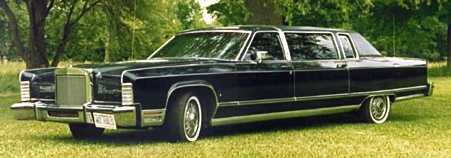
|
Owned by Eric Lauer in Athens, GA. Originally purchased in 1972 this Lincoln Continental was customized (a two foot stretch) the following year for a Pennsylvania funeral home director who apparently had a matching hearse made as well. Several things make this car one-of-a-kind. Hotton added opera windows on the c-pillars, the limousine-style rear window, a "Continental hump" on the trunk, the classic Andy Hotton grille, and a 1973 bumper which currently accomodates amber fog lamps. The fender skirts were also removed to make the rear wheel openings match the front. The car is technically considered an 8-passenger formal sedan although the jump seats, while not a full bench, it can accomodate three people. The car had only 36,000 original miles when Eric purchased it. 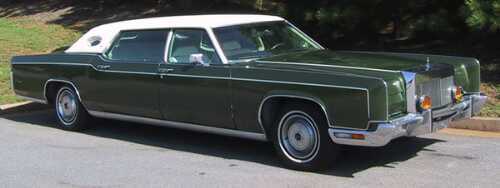 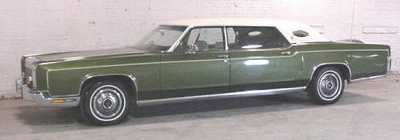 |
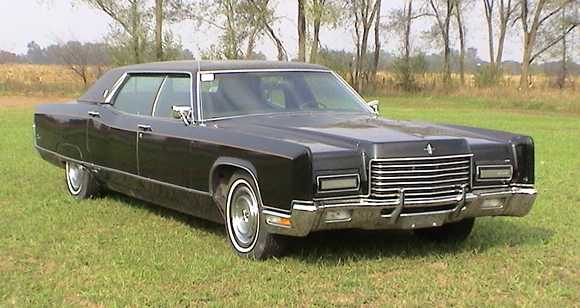

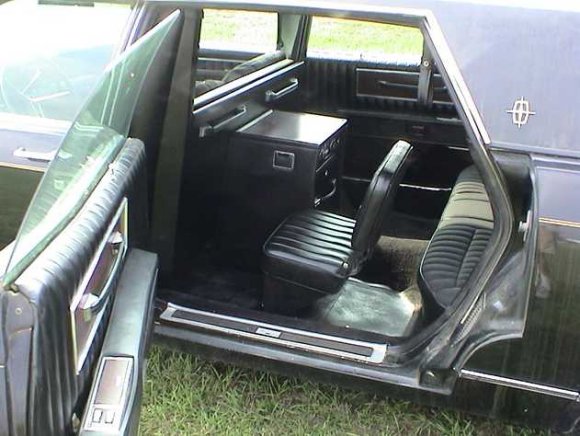
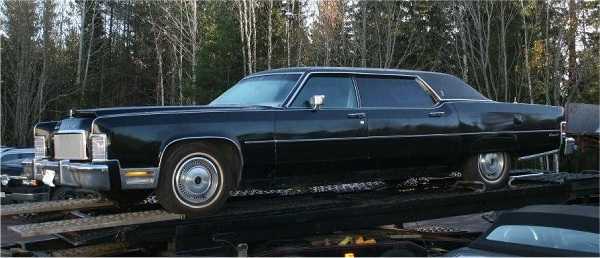

|
Owned by Anthony Buccini in Huntingdon Valley, PA The car has a bar with the ice bucket and glasses, power glass partition window, jump seats, dual air condition units adjusting from front to rear & from left to right, fog lamps, deluxe pleated door panels and trim. As compared to regular stretches this car has more privacy as the back seat sits way back. Anthony is in the process of redoing the car. 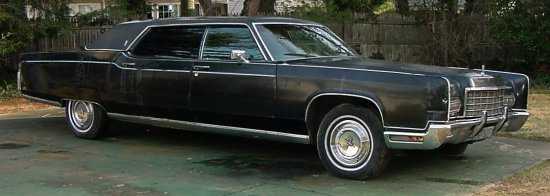 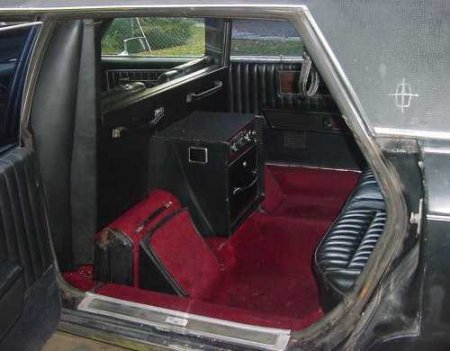 |
